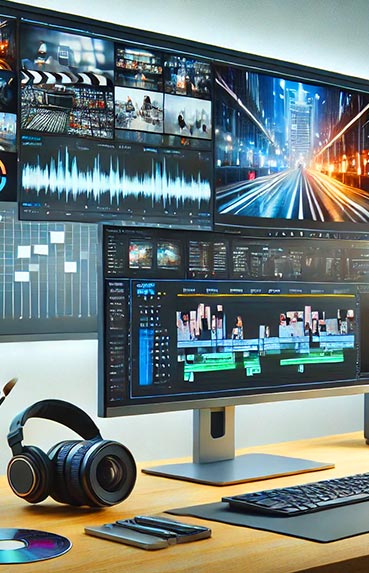In today's digital era, online videos have become a fundamental tool for communication, education, and entertainment. However, a crucial element is often overlooked that can make the difference between a successful video and one that fails to capture the viewer's attention: audio quality. In this article, we will explore the importance of this vital aspect and how it can influence the user experience.
The Psychology of Sound
The Impact of Audio on Perception
Quality audio can transform the visual experience. When a viewer watches a video, they are not only receiving visual information; audio plays an essential role in how this content is perceived and processed. A study conducted by the University of Southern California found that high-quality sound significantly increases the overall perception of video quality. This means that even if the image quality is excellent, poor audio can diminish the overall value of the content.
The Emotional Influence of Sound
Sound has an intrinsic emotional power. Melodies, tones, and sound effects can evoke strong emotions, create tension, or even provide comic relief. For example, in a horror movie, unsettling music and background sounds are crucial for creating an atmosphere of fear. In educational videos, clear and calm audio can facilitate understanding and retention of information.
Technical Aspects of Audio Quality
Basic Elements of Quality Audio
To achieve good audio in online videos, several technical aspects must be considered:
- Clear Recording: Use good quality microphones and position them appropriately to capture sound optimally.
- Sound Editing: Process the audio to eliminate background noise and adjust volume levels.
- File Format: Use high-quality formats, such as WAV or FLAC, instead of compressed formats like MP3.
Recommended Tools and Software
There are numerous tools and software that can help improve audio quality:
- Audacity: A free and open-source audio editor offering multiple sound editing features.
- Adobe Audition: Professional software that allows advanced audio editing and restoration.
- Reaper: A powerful audio editing program offering a wide range of plugins and customization options.
Consequences of Poor Audio
Negative Effects on the Audience
Poor audio can have several negative consequences:
- Disinterest and Abandonment: Viewers are likely to abandon a video if the audio is bad, regardless of how interesting the visual content might be.
- Confusion: Lack of clarity in sound can lead to misunderstandings, especially in educational or informational videos.
- Loss of Credibility: Poor audio quality can give an impression of amateurism and lack of professionalism.
Case Studies and Real Examples
A notable example is the launch of an online course that, despite having visually appealing content, received negative reviews due to poor audio quality. Students reported difficulties following the lessons, leading to a decrease in enrollments and a negative impact on the course creator's reputation.
Improving the User Experience
Strategies to Optimize Audio
To enhance the user experience through audio, the following strategies can be implemented:
- Pre-recording Sound Tests: Conduct sound tests before recording to identify and adjust potential issues.
- Use Quality Headphones: During both recording and editing, use good quality headphones to ensure the audio is clear and precise.
- Implementation of Subtitles: Providing subtitles can be a useful alternative to compensate for any audio issues, as well as making content accessible to people with hearing disabilities.
The Importance of User Feedback
Listening to the audience is crucial. Requesting feedback on audio quality can provide valuable insights for making improvements. Platforms like YouTube allow creators to receive direct comments from viewers, which can be useful for adjusting the approach and resources used in future productions.
Audio quality is not just a complement; it is an integral part of the online video experience. Investing in good sound can make the difference between capturing the viewer's attention or losing it.
The Future of Audio Quality in Online Videos
Emerging Trends
Audio technology is constantly evolving, and current trends are paving the way for a more immersive auditory experience:
- 3D and Spatial Audio: More platforms are adopting three-dimensional audio technologies that allow viewers to experience sound in a more immersive way.
- Artificial Intelligence in Audio Editing: AI-based tools are emerging to automatically improve audio quality, adjusting levels and eliminating unwanted noise.
The Importance of Adapting to Change
Adaptability is key to success. As technology advances, it is essential for content creators to stay updated with the latest tools and techniques to ensure their videos remain relevant and engaging for the audience.
Implicit Conclusions
Throughout this article, we have explored how audio quality can significantly influence the perception and success of online videos. From its psychological and emotional impact to the negative consequences of poor audio, it is clear that sound is a vital component that should not be underestimated. By implementing effective strategies and adapting to emerging trends, content creators can enhance the user experience and ensure their videos resonate, in more ways than one, with their audience.

















